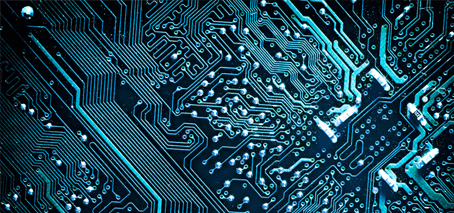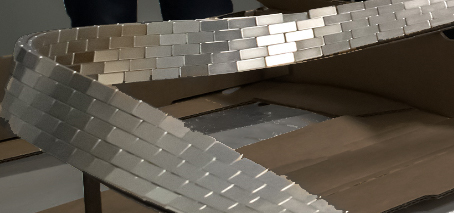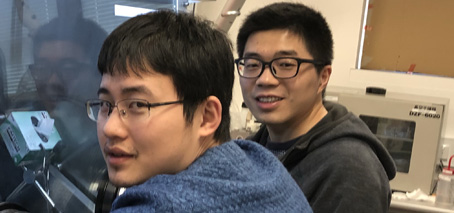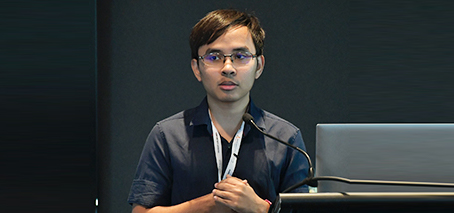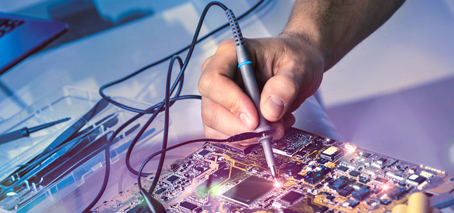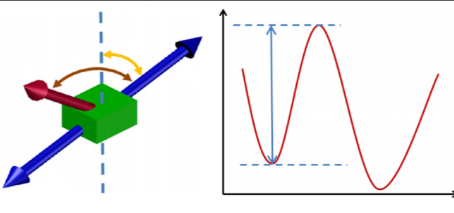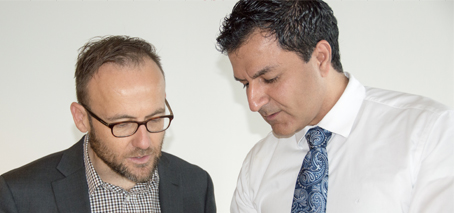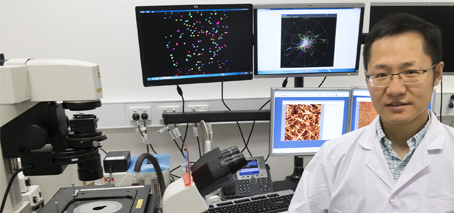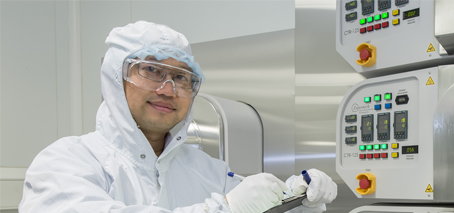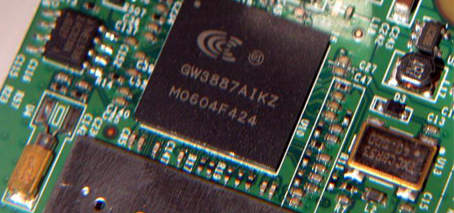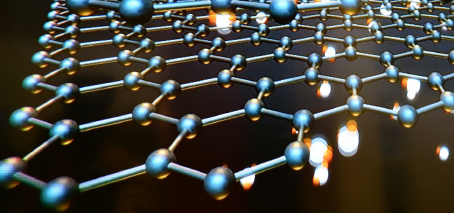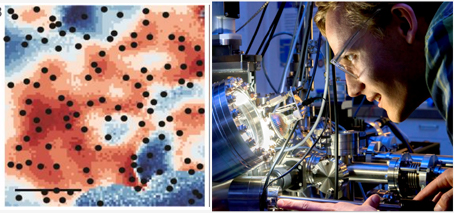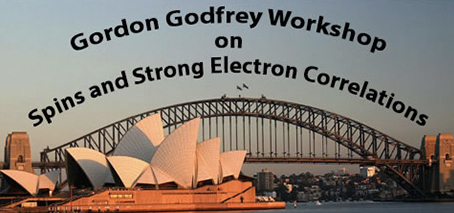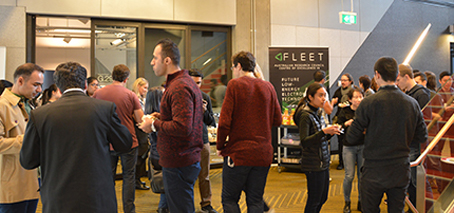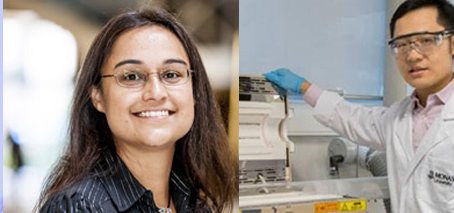Congratulations to RMIT Professor Jared Cole, now a FLEET Chief Investigator. Jared is a theoretical physicist specialising in quantum physics and decoherence theory, particularly its application to solid-state systems. Within FLEET Jared investigates the influence of dissipation and decoherence on electronic transport in nanostructures, and its role in electronic devices based on topologically protected conduction channels. This is key to …
FLEET collaboration aims to prevent energy losing its way
Published in Monash Lens 27 Sep 2018 Featuring Meera Parish & Michael Fuhrer, School of Physics & Astronomy, Monash University Cheaper, faster, smarter, smaller – the ever-evolving digital world has changed the way we live, as predicted by the law Gordon Moore outlined in 1965. Moore’s Law foretold that the number of transistors in a dense integrated circuit would double …
Polaritons and the thrill of fundamental discoveries: meet FLEET’s Eliezer Estrecho
FLEET’s Eli Estrecho recently finished his PhD, and is now a postdoctoral researcher, working with Professor Elena Ostrovskaya in the Polariton-BEC Research Group, Australian National University. We asked Eli some questions about his research, how he got into physics, and the thrill of fundamental discoveries. Q: Tell me about your research at ANU EE: I study hybrid particles of light …
Australia-Singapore Joint Quantum Computing and Technology Foresight Meeting
Efforts towards the development of quantum computer technology, towards quantum assisted precision sensors, towards quantum assisted simulators, towards quantum cryptography and a quantum internet – linking up quantum devices both nationally and internationally, is the focus of much research throughout the world. Both Australia and Singapore have made significant investments in quantum science and related disciplines, with numerous projects working …
Supercool, superconducting Mobius track helps communicate FLEET science
A super-cooled, superconducting Mobius-track impresses the crowds, helps embed FLEET science As a cool science demo, FLEET’s superconductor Mobius track ticks all the boxes: liquid nitrogen – tick. Superconductor – tick. Cool shape – tick. Relevance to the science – tick tick tick. The track features 1500 neodymium magnets, fixed into the shape of a Mobius strip, so that a …
New FLEET partnerships with Beijing and Wroclaw
We are extremely pleased to announce two new FLEET partners. The Beijing Computational Science Research Center (CSRC) and Wroclaw University of Science and Technology have joined the 13 other leading Australian and international science organisations partnering with FLEET. Wroclaw University of Science and Technology (WUST) is Poland’s top-ranked new-technology university, excelling in computer science, electronics and materials science. Our new Partner …
Honours Project: Dirac Electronic Materials
Recently new materials have emerged in which the electron dynamics are described by the Dirac equation in two dimensions. An example is graphene, the two-dimensional honeycomb lattice of carbon atoms that is the basic building block of graphite. In graphene, the electrons obey a massless Dirac equation, with the role of the relativistic electron spin played by a spinor (“pseudospin”) …
Honours Project: Defects and artificial atoms in 2D semiconductors
Atomically thin semiconductors, materials comprised of surface only, have remarkable electronic and optical properties and allow us to study basic physical concepts in a well-controlled environment. Besides this, these materials are envisioned to be used in future types of electronics, making them attractive for both basic and applied research. In 2D semiconductors, donor impurities (ions) and their bound electron, as well …
Light-transformed materials: detail
Centre collaboration combines material expertise
FLEET RMIT—UNSW collaboration measuring transport properties of van der Waals heterostructures FLEET PhD Cheng Tan (RMIT) visited UNSW’s labs in May to perform magnetic coupling measurements on 2D ferromagnetic crystals. The visit was reciprocated this month with FLEET Research Fellow Feixiang Xiang (UNSW) visiting RMIT to construct van der Waals structures for studying of 2D topological systems. This collaboration between …
Trapping light–matter particles at ANU
FLEET collaboration traps light–matter particles FLEET’s Research theme 2 seeks to create near-zero resistance flow of exciton polaritons, which are hybrid quasi-particles that are part matter and part light. Their ability to flow without resistance relies on formation of an exciton-polariton condensate – a collective quantum state that behaves as a superfluid. In superfluids, particles flow without encountering any resistance …
FLEET research structure
FLEET will develop new systems in which electricity can flow with minimal resistance and dissipation of heat, and develop devices in which that dissipationless electric current can be switched on and off. These devices will enable revolutionary new electronics and communications technologies with ultra-low power consumption. FLEET is pursuing the following research themes to develop systems in which electrical current can flow …
Thinner is better: van der Waals (vdW) material shows the right stuff at 200 nanometres
The unusual electronic and magnetic properties of van der Waals (vdW) materials, made up of many ‘stacked’ 2D layers, offer potential for future electronics, including spintronics. In a recent study, FLEET researchers at RMIT found that one promising candidate material, Fe3GeTe2 (FGT), fits the bill – provided it’s created in layers only 200 millionths of a millimetre in thickness. This …
Physics in the Pub
Colliding black holes, quasiparticles, and a low energy future Download the event flyer here. Eight snappy physics presentations. An informal, lighthearted night where physicists, astronomers, theoreticians, engineers and educators share their love of science. Grab a drink and a snack, and hear local researchers talk and laugh about their science in a relaxed setting. https://www.facebook.com/events/1196696013794763/ @philuponscience www.philuponscience.com.au
Melbourne MP Adam Bandt visiting FLEET RMIT
An MP visit last week provided an opportunity to discuss future electronics, 2D materials and science policy. Melbourne MP and Greens Science/Energy spokesperson Adam Bandt was visiting FLEET’s labs at RMIT, hosted by FLEET RMIT node leader Kourosh Kalantar-Zadeh, and FLEET Director Michael Fuhrer. As well as FLEET researchers, Adam also got to meet our scientific counterparts from the Centre for …
FLEET’s Qiaoliang Bao a champion of Australian nanotech
FLEET-nano collaboration recognised: Congratulations to Qiaoliang Bao, 2018 ANFF-VIC Technology Fellow Qiaoliang Bao works at the nanoscale, trapping photons in atomically-thin, two-dimensional materials, where high binding energies create a quantum state known as a superfluid. The aim is a new generation of superfluid transistors that will ‘switch’ using much less energy than conventional electronics. Such work requires access to the …
Island Physics 2018
The 3rd triennial Island Physics conference series, Island Physics 2018 brings together participants from academia and industry to advance quantum technologies in Australia and FLEET is a proud co-organiser of this meeting. FLEET Chief investigators Meera Parish, Monash University and Chris Vale, Swinburne University are invited speakers at this year’s Island Physics. To be held at Peppers Blue Resort, Magnetic …
Custom, nanoscale structures on demand at RMIT
“Endless” possibilities for custom nanotech design FLEET’s research to achieve zero-dissipation electrical current depends on the design of key nanoscale structures. Within FLEET, nano-device fabrication is coordinated via Enabling technology B, which links each of the research themes. In 2017, Theme B leader Lan Wang, and PhD student Cheng Tan, developed a method to build such nanoscale structures, required to achieve zero-dissipation …
Explainer: zeroes and ones and the transistors at the heart of computing
Wait. What do you mean ‘transistors’? Yep, ‘transistors’ are still the basis of electronics. In essence, they’re the tiny controllable switches that form the building blocks of logic circuits, switching between open (0) and closed (1). In your Dad’s old ‘wireless’ radio, transistors were the small metallic components shaped like War of the Worlds war tripods. Those replaced the glass …
Explainer: Glossary of terms
Some terms and materials relevant to FLEET. The first sentence or two of each definition is aimed at non-physicists. For physicists in the field, these are suggested as accurate, non-jargon simplifications to help communicate your science. More information for experts is given in italics for some terms, as well as useful links. Feedback and suggested tweaks/additions are very welcome! 2D Two-dimensional materials …
Explainer: why use 2D atomically-thin materials
Why does FLEET use atomically-thin, 2D materials? FLEET uses materials that are just one layer of atoms in thickness, referred to as being ‘atomically thin.’ Such materials are also known as ‘two dimensional’ (2D), as opposed to three dimensional. Quantum effects become much more significant when the freedom of charge carriers is restricted to only two dimensions (relative to their …
Electronically-smooth ‘3D graphene’: a bright future for trisodium bismuthide
Electronically-smooth nature of trisodium bismuthide makes it a viable alternative to graphene/h-BN Researchers have found that the topological material trisodium bismuthide (Na3Bi) can be manufactured to be as ‘electronically smooth’ as the highest-quality graphene-based alternative, while maintaining graphene’s high electron mobility. Na3Bi is a Topological Dirac Semimetal (TDS), considered a 3D equivalent of graphene in that it shows the same …
Research centres share best practice
Sharing best practice, finding efficiencies, setting up future networks – and swapping a few war stories Operations staff from 18 ARC-funded centres met in Melbourne last week to share best practice and learnings, and to develop future networks among similar roles. How do centres become ‘greater than the sum of the parts’? What strategies have professional staff found to enhance …
Gordon Godfrey Workshop sparks spin & electron-correlation discussion at UNSW
Over 80 Australian and international physicists met at UNSW last month to discuss spin and strong-electron correlations in the university’s biennial Gordon Godfrey Workshop, including a very strong FLEET contingent. Leading international speakers came from as far afield as China, Denmark, France, Germany, Israel, Italy, Japan, Switzerland, Russia and USA, including Prof David Neilson (University of Camerino), a pioneer of electron-hole exciton …
Research in Light-Transformed Materials
FLEET researchers undertake various research projects in the area of Light-Transformed Materials. If you have a project that would fit this theme, find information about a potential supervisor here: PROF. KRIS HELMERSON Ultracold atomic gases Biophysics Biotechnology A/PROF. MEERA PARISH Theory of strongly correlated phenomena in ultracold atomic gases and electron systems Superconductivity and superfluidity Lowdimensional systems Magnetotransport DR. AGUSTIN …
Welcome
Victorian ARC Centres and Hubs Staff Workshop
Bringing together business teams from Victorian ARC Centres and Hubs to network, learn best practices and create greater efficiencies. We welcome professional staff from Centres of Excellence, Industrial Transformation Research Hubs and Training Centres including chief operating officers, centre managers, business managers and staff in finance, communications, outreach, mentoring, stakeholder engagement, education & training and node administration. Please distribute the …
Got a PhD? What’s next?
Where can your PhD take you? And how can you maximise your potential future? A group of STEM PhDs and higher degree researchers heard about career options post-PhD at a forum last month, run by FLEET at Monash University. The assembled panel of academics, entrepreneurs, business development and research managers shared their own diverse career journeys and top tips on …
Two-dimensional materials key to solving ‘invisible’ computing energy challenge
From Monash University Insider (staff only) While a smartphone or home PC itself doesn’t burn too much energy, a tremendous amount of electricity is consumed in the massive data centres (or ‘server farms’) that keep us all connected via the net. A new, ARC-funded research centre aims to address the growing computing energy challenge using materials that are just one …
PhD Application Information – ANU
Eligibility You are most likely to gain admission to a Doctor of Philosophy program if you hold a Masters of Philosophy or a Bachelor degree with First Class Honours. You may also be granted admission if you can demonstrate that you have a background equivalent to these qualifications. This award is conducted in English and is made principally on the basis of …


